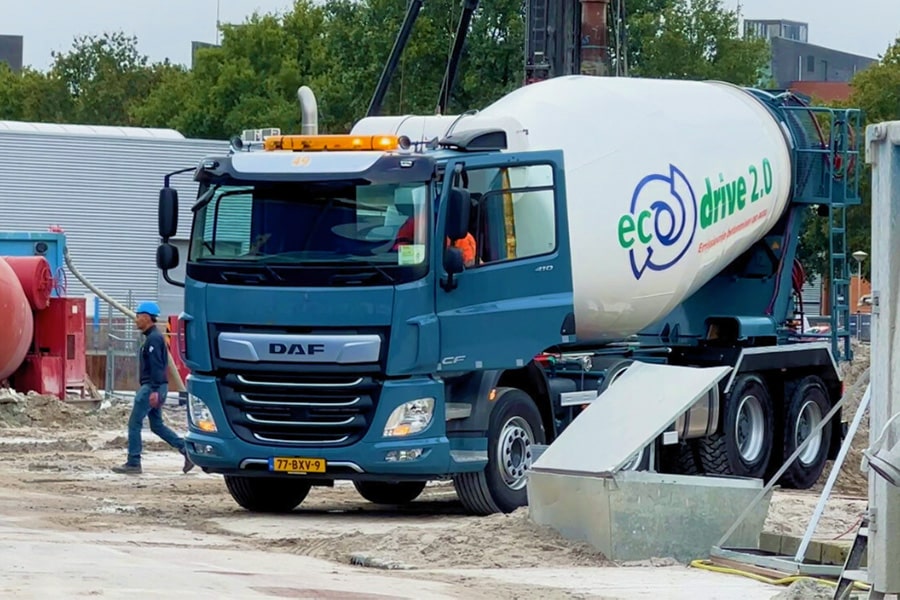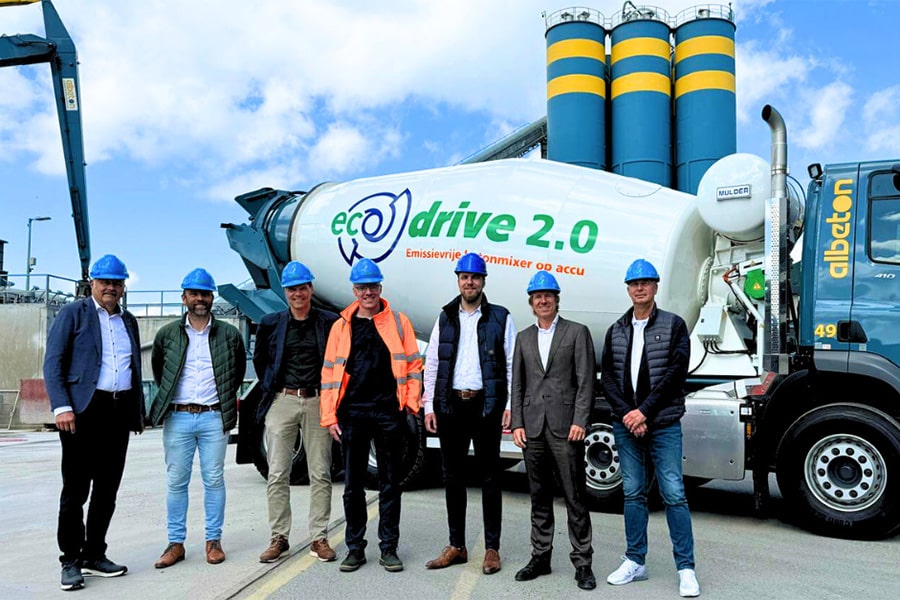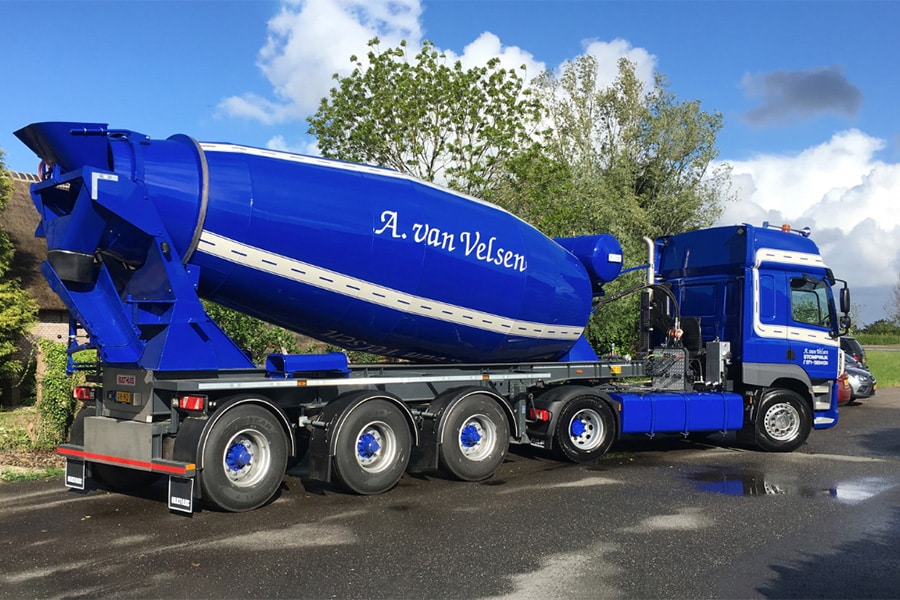
Concrete mixers make the leap to emission-free
The concrete industry is in the midst of the transition to an emission-free construction site. Innovations range from motorless mixers that save fuel to fully electric solutions that run without emissions. Recent projects of Mulder Europe at Van Velsen, Albeton and BCK, show that sustainability in concrete transport is no longer a distant future, but practice of today.

Traditional mixers: smarter and more economical
Although electric is gaining traction, the conventional concrete mixer is still indispensable. After all, many construction sites are not equipped for heavy batteries or charging infrastructure. Therefore, Mulder Europe is constantly looking for innovations to make traditional mixers more efficient. One example is Van Velsen's motorless concrete mixer, built by Mulder Europe. By using the drive of the truck, the mixer no longer needs its own engine. This reduces fuel consumption, maintenance and emissions while maintaining reliability. The project at Van Velsen shows that sustainability does not always have to be a radical step. Smart innovations already offer direct gains without having to renew an entire fleet.
EcoDrive 2.0: emission-free mixing at Albeton
At the same time, the move to all-electric is being made. One of the first companies to dare to do so is Albeton, with the introduction of Mulder Europe's EcoDrive 2.0. This mixer combines the familiar robustness of Mulder Europe with a fully electric drive. Thus, the product is in line with the ambition to achieve emission-free construction sites. For Albeton this means a concrete step towards greening, with lower CO2 emissions, less noise and maintaining performance.

At the forefront of innovation
“We will always be at the forefront of innovation,” says Wijnand van Aalst, CEO of the Van Aalst Group, of which Mulder Europe is a part. For 25 years, he has led the family concern that once started with a concrete plant and steel mill and is now expanding into emission-free mixers, bulk handling systems and offshore access technology. With the EcoDrive 2.0, Mulder continues that tradition: “Batteries are getting lighter, hydrogen is beckoning, but what matters now is affordable availability on construction sites.”

Trailer solution for BCK
Betonmortel Centrale Koudekerk (BCK) also recently chose an innovative solution from Mulder Europe: an electric concrete mixer on trailer. This application shows that electrification is not limited to the standard truck mixer, but also in customization is possible. BCK itself emphasized this at the commissioning, ‘There he is, our new 100% electric concrete mixer! After the electric 6×2 Volvo FMe tractor was delivered in May, now the mixer follows. With this combination we are able to deliver our concrete 100% electric in the green heart of the Netherlands. Together we are building a more sustainable future!’

From craftsmanship to future vision
The common thread in these projects is the bridge between tradition and innovation. For almost a century, the concrete mixer has been considered an indispensable workhorse in construction. The examples of Van Velsen, Albeton and BCK show that this icon does not stand still.
The motorless mixer proves that within existing systems a lot of profit can already be made. The EcoDrive 2.0 and electric trailer show that emission-free work is no longer a distant future, but a real alternative. The construction sector faces major challenges. Circularity, CO2 reduction and emission-free construction sites are no longer options, but requirements. Mulder Europe shows that concrete mixers can play a key role in this. By making traditional solutions smarter and electric innovations to develop the road to a zero-emission construction site.
Whether extending the life of the fleet, reducing fuel consumption or switching completely to electric, Mulder Europe's recent projects show that the concrete mixer is quickly adapting to the demands of today and tomorrow. From motorless to fully electric: the industry is on its way to an emission-free future.




